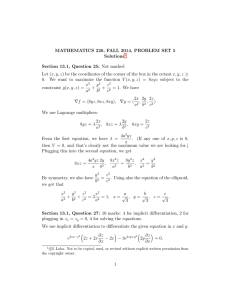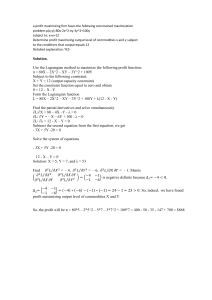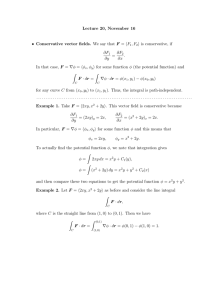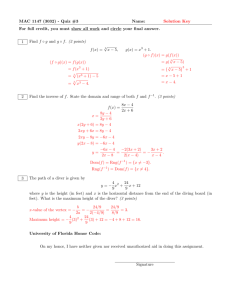Math 2263 Fall 2013 - Quiz 4 10/9/2013 Name: Please answer the
advertisement
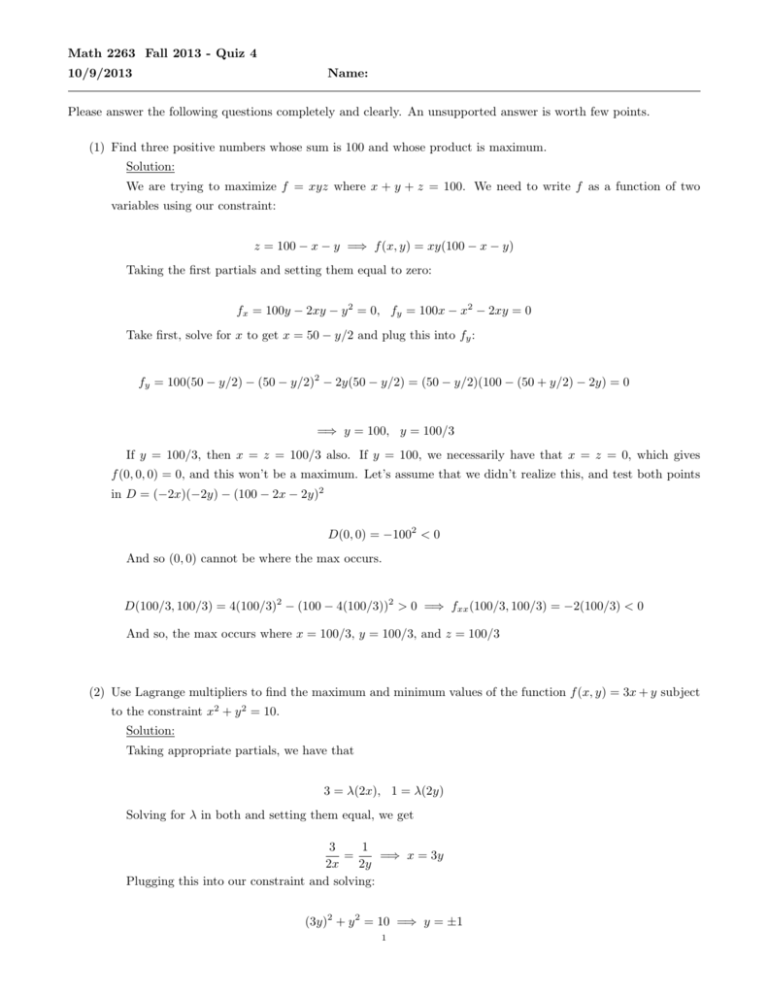
Math 2263 Fall 2013 - Quiz 4 10/9/2013 Name: Please answer the following questions completely and clearly. An unsupported answer is worth few points. (1) Find three positive numbers whose sum is 100 and whose product is maximum. Solution: We are trying to maximize f = xyz where x + y + z = 100. We need to write f as a function of two variables using our constraint: z = 100 − x − y =⇒ f (x, y) = xy(100 − x − y) Taking the first partials and setting them equal to zero: fx = 100y − 2xy − y 2 = 0, fy = 100x − x2 − 2xy = 0 Take first, solve for x to get x = 50 − y/2 and plug this into fy : fy = 100(50 − y/2) − (50 − y/2)2 − 2y(50 − y/2) = (50 − y/2)(100 − (50 + y/2) − 2y) = 0 =⇒ y = 100, y = 100/3 If y = 100/3, then x = z = 100/3 also. If y = 100, we necessarily have that x = z = 0, which gives f (0, 0, 0) = 0, and this won’t be a maximum. Let’s assume that we didn’t realize this, and test both points in D = (−2x)(−2y) − (100 − 2x − 2y)2 D(0, 0) = −1002 < 0 And so (0, 0) cannot be where the max occurs. D(100/3, 100/3) = 4(100/3)2 − (100 − 4(100/3))2 > 0 =⇒ fxx (100/3, 100/3) = −2(100/3) < 0 And so, the max occurs where x = 100/3, y = 100/3, and z = 100/3 (2) Use Lagrange multipliers to find the maximum and minimum values of the function f (x, y) = 3x + y subject to the constraint x2 + y 2 = 10. Solution: Taking appropriate partials, we have that 3 = λ(2x), 1 = λ(2y) Solving for λ in both and setting them equal, we get 3 1 = =⇒ x = 3y 2x 2y Plugging this into our constraint and solving: (3y)2 + y 2 = 10 =⇒ y = ±1 1 Since x = 3y, we get two points: (−3, −1) and (3, 1). Plugging these into f , we have that f (−3, −1) = −10 is the minimum value and f (3, 1) = 10 is the maximum value.

